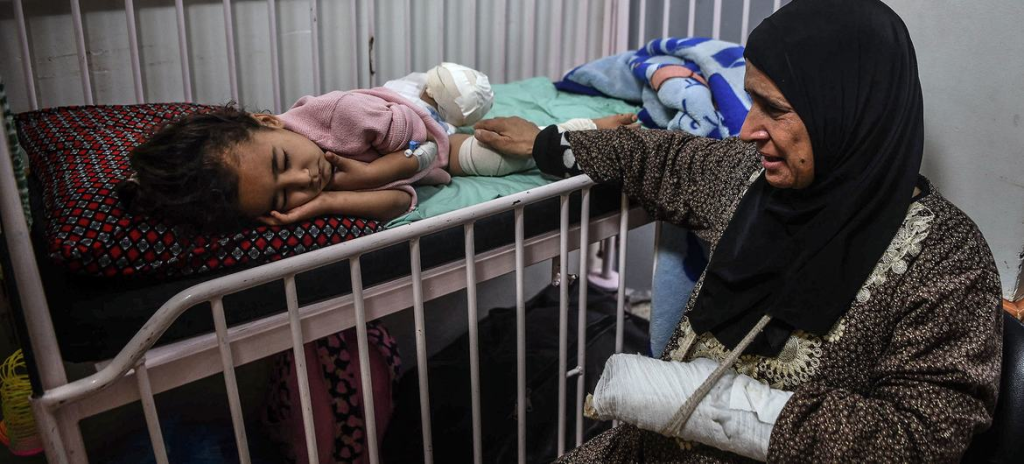Primary Keyword: Attacks on Healthcare in Gaza and West Bank
Secondary Keywords: WHO, World Health Organization, Gaza Strip, West Bank, humanitarian crisis
Introduction
The ongoing conflict in the Gaza Strip and the West Bank has taken a devastating toll on the healthcare infrastructure and the lives of the people living in these regions. The World Health Organization (WHO) has reported nearly 600 attacks on healthcare facilities since the war began, resulting in the deaths of hundreds of people and leaving thousands injured. The situation has reached a critical point, with children being particularly vulnerable to the dire consequences of the conflict. In this article, we will delve into the alarming statistics, the impact on children, the challenges faced by humanitarian organizations, and the urgent need for international assistance.
Attacks on Healthcare Facilities: A Grim Reality
According to the latest data from the WHO, a staggering 613 people have lost their lives within health facilities in the Occupied Palestinian Territory since 7 October last year. Of these, 606 deaths occurred in Gaza, while seven were reported in the West Bank. The relentless bombardment and ongoing reduction of humanitarian space have pushed the people of Gaza to the breaking point, as stated by Christian Lindmeier, the spokesperson for the WHO. The attacks on healthcare facilities have not only resulted in loss of life but have also severely impacted the ability to provide essential medical services to those in need.
Impact on Children: A Triple Threat
Children in the Gaza Strip face a deadly triple threat to their lives. The escalation in hostilities has led to a rapid deterioration in living conditions, with a rise in cases of diseases, plummeting nutrition, and increasing food poverty. The violence has already claimed the lives of thousands of children, and the situation continues to worsen. Catherine Russell, the head of the UN Children’s Fund (UNICEF), has highlighted the alarming rise in cases of diarrhea among children under five, from 48,000 to 71,000 in just one week starting 17 December. This equates to approximately 3,200 new cases of diarrhea per day. The significant increase in cases indicates the fast deterioration of child health in Gaza.
Attacks on Healthcare Facilities: A Grim Reality
The attacks on healthcare facilities have been relentless, with WHO’s online platform documenting a total of 304 attacks in the Gaza Strip since 7 October. These attacks have affected 94 healthcare facilities, including 26 hospitals out of 36, and 79 ambulances. In the West Bank, 286 attacks have been reported, resulting in seven deaths and 52 injuries. This has affected 24 health facilities and 212 ambulances. The continuous targeting of healthcare facilities has not only disrupted the provision of medical services but has also created an environment of fear and instability for healthcare workers and patients alike.
The Plight of Children in Gaza

The situation faced by children in the Gaza Strip is nothing short of a nightmare. They are caught in a cycle of violence that worsens with each passing day. The lack of access to basic services and supplies, coupled with preventable diseases and malnutrition, puts their lives at risk. UNICEF has been working tirelessly to provide support to these children, but the challenges are immense. The rising cases of diarrhea among children under five are indicative of the deteriorating child health situation in Gaza. Prior to the escalation in hostilities, an average of 2,000 cases of diarrhea in children under five were recorded per month. The current figures are alarming and demand urgent attention.
Humanitarian Efforts Stymied
Despite the pressing need for humanitarian aid, relief efforts in the Gaza Strip and the West Bank face numerous challenges. The operating environment is fraught with security risks, mobility constraints, delays, and denials. Eri Kaneko, a spokesperson for the aid coordination office OCHA, has expressed concerns about the hampered relief efforts due to multiple inspections, long queues of trucks, and difficulties at crossing points. Aid operations inside Gaza face constant bombardments, with aid workers risking their lives to provide assistance. Poor communications, damaged roads, and delays at checkpoints further compound the challenges faced by humanitarian organizations.
UNRWA: Providing Help to Palestinians
The UN Relief and Works Agency for Palestine Refugees (UNRWA) plays a crucial role in providing assistance to Palestinians affected by the conflict. Since the beginning of hostilities, a total of 142 UNRWA staff members have lost their lives. The number of internally displaced persons (IDPs) has reached a staggering 1.9 million across the Gaza Strip, which constitutes over 85% of the population. Families have been forced to move repeatedly in search of safety, with 1.4 million IDPs currently sheltering in 155 UNRWA facilities. Additionally, another 500,000 people in the vicinity of these installations receive assistance from the UN agency. The scale of displacement and the strain it places on resources is overwhelming.
IOM’s Urgent Appeal for Assistance

The International Organization for Migration (IOM) has launched an urgent appeal for $69 million to support its response to the critical humanitarian needs in the Occupied Palestinian Territories. The appeal also covers neighboring countries affected by the ongoing hostilities in Gaza. The dire situation demands immediate action, as hundreds of thousands of civilians are in desperate need of aid. However, the delivery of assistance is hindered by long clearance procedures at the border, the intense ground operations, and frequent disruptions to communication networks. The IOM emphasizes the importance of security, logistical capacity, and the resumption of commercial activity to ensure an effective aid operation in Gaza.
Conclusion
The attacks on healthcare facilities in the Gaza Strip and the West Bank have created a humanitarian crisis of immense proportions. The lives of hundreds of people have been lost, and thousands have been injured. Children, in particular, face a dire situation, with rising cases of diseases and malnutrition. Humanitarian organizations are working tirelessly to provide assistance, but they face significant challenges due to security risks, mobility constraints, and damaged infrastructure. The UNRWA and the IOM have been at the forefront of providing support, but the scale of the crisis demands urgent international assistance. It is imperative that the international community takes immediate action to protect the lives of innocent civilians and ensure access to essential healthcare services in the affected regions.

